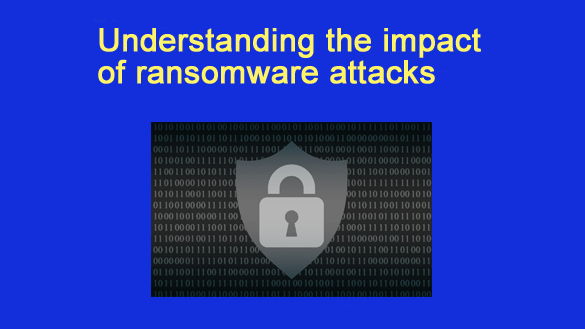 Introduction
Introduction
Over the past decade, ransomware has evolved from a niche cybercrime tactic into one of the most dangerous and costly threats in the digital landscape.
Initially, these attacks targeted individual users for small sums, but they have since scaled into highly organized operations that cripple global businesses, hospitals, schools, and even government agencies.
One of the most alarming changes in recent years is the shift toward critical infrastructure attacks, where ransomware disrupts essential services such as healthcare, energy, and transportation. This heightened level of risk means that organizations now face not only financial consequences but also threats to public safety.
The rising volume and complexity of ransomware incidents have placed immense pressure on organizations to strengthen cybersecurity strategies, understand attack mechanics, and implement preventive measures before it’s too late.
What Is Ransomware and How It Works
Ransomware is a form of malicious software designed to block access to files, systems, or entire networks until a ransom is paid. In most cases, attackers use encryption to lock valuable data, demanding payment-often in cryptocurrency-before providing a decryption key.
Understanding the threat is essential, but having a well-defined plan with clear steps to recover from ransomware attacks can significantly reduce operational downtime, protect sensitive information, and help organizations avoid paying the ransom.
Typically, an attack begins with the infiltration of a system via phishing emails, malicious links, or software vulnerabilities. Once inside, the malware silently encrypts files or locks systems and then displays a ransom demand. More advanced forms of ransomware also exfiltrate sensitive data and threaten to publish it, escalating pressure on victims to pay.
Types of Ransomware Attacks
Encryption Ransomware
Locks valuable files through encryption, making them inaccessible without a decryption key.
Locker Ransomware
Restricts access to entire devices or systems, preventing normal usage.
Double and Triple Extortion
Attackers not only encrypt data but also steal it, threatening to release sensitive information to the public or competitors if payment is not made.
Ransomware-as-a-Service (RaaS)
A criminal business model where ransomware developers lease their malicious software to affiliates, allowing less-skilled attackers to launch sophisticated campaigns.
Key Vectors of Ransomware Infections
Phishing Emails & Malicious Attachments – The most common entry point for ransomware infections.
Compromised Software Updates – Attackers insert malicious code into legitimate updates.
Exploiting Vulnerabilities – Outdated operating systems and software create easy attack paths.
Weak Passwords – Poor authentication practices allow brute-force or credential-stuffing attacks.
The Multi-Dimensional Impact of Ransomware
Financial Consequences
Ransom payments that may run into millions.
Legal, forensic investigation, and remediation costs.
Revenue loss from operational downtime.
Operational Disruption
Service outages that affect customers and partners.
Delays in production or supply chain operations.
Missed contractual obligations leading to penalties.
Data Security and Privacy Risks
Permanent loss of mission-critical data.
Exposure of sensitive customer or corporate information.
Risk of regulatory fines under GDPR, HIPAA, and other laws.
Reputational Damage
Loss of customer trust and loyalty.
Negative press coverage is impacting brand perception.
Long-term harm to market positioning and investor confidence.
High-Profile Ransomware Case Studies
Colonial Pipeline (2021) – Disrupted fuel supply across the U.S. East Coast, causing widespread shortages.
WannaCry (2017) – Impacted over 200,000 computers globally, hitting healthcare, manufacturing, and government systems.
Healthcare Sector Attacks – Ransomware infections leading to canceled surgeries, delayed diagnoses, and patient data breaches.
These examples underscore the need for robust preventive measures and fast recovery strategies.
How Ransomware Impacts Small vs. Large Businesses
Small and medium-sized businesses (SMBs) often lack the advanced cybersecurity resources of large enterprises, making them attractive targets. Attackers know SMBs may be more willing to pay ransoms quickly to resume operations. Larger enterprises, while having more robust defenses, face a greater risk of reputational and regulatory fallout when breached.
Strategies to Mitigate Ransomware Impact
Multi-Factor Authentication (MFA) – Reduce unauthorized access risk.
Patch Management – Regularly update software and systems.
Secure Backups – Maintain offline, immutable backups tested for quick restoration.
Security Awareness Training – Teach employees how to identify phishing and suspicious links.
For further strategies, organizations can refer to resources from CISA and NIST for best practices.
Responding to a Ransomware Attack
Isolate the infected system immediately to prevent lateral spread.
Report the incident to law enforcement and cybersecurity agencies.
Engage professional incident response teams for forensic analysis.
Evaluate ransom payment risks-paying does not guarantee data recovery and may encourage further attacks.
The Cybercrime Magazine site also provides detailed victim response guidelines.
The Role of Global Cybersecurity Collaboration
Ransomware is a global problem requiring international solutions. Public-private partnerships, cross-border law enforcement efforts, and industry alliances are essential to track and dismantle ransomware operations. Threat intelligence sharing helps organizations detect patterns and prepare for evolving tactics.
Future Outlook – How Ransomware Impact May Evolve
AI-Powered Attacks – Automated phishing and adaptive ransomware campaigns.
Cloud & SaaS Targeting – Attacks focusing on cloud-based storage and applications.
IoT Vulnerabilities – Ransomware targeting connected devices.
Tighter Regulations – Governments may introduce stricter reporting and anti-payment laws.
Conclusion
Ransomware is no longer just an IT problem-it’s a business continuity and national security concern. By understanding attack methods, preparing response plans, and fostering a culture of cybersecurity awareness, organizations can reduce the potential impact of even the most sophisticated attacks. Proactive defense and rapid recovery capabilities remain the strongest weapons against this evolving threat.
FAQs
Q1: How long does it take to recover from a ransomware attack?
Recovery time varies based on preparation and response speed. With strong backups and an incident response plan, some organizations recover in days, while others take weeks or months.
Q2: Does paying the ransom guarantee full data restoration?
No. Many victims who pay never receive working decryption keys or find that the keys only partially restore their data.
Q3: What industries are most affected by ransomware attacks?
Healthcare, finance, manufacturing, and critical infrastructure sectors are among the most frequently targeted due to the high impact of operational disruptions.